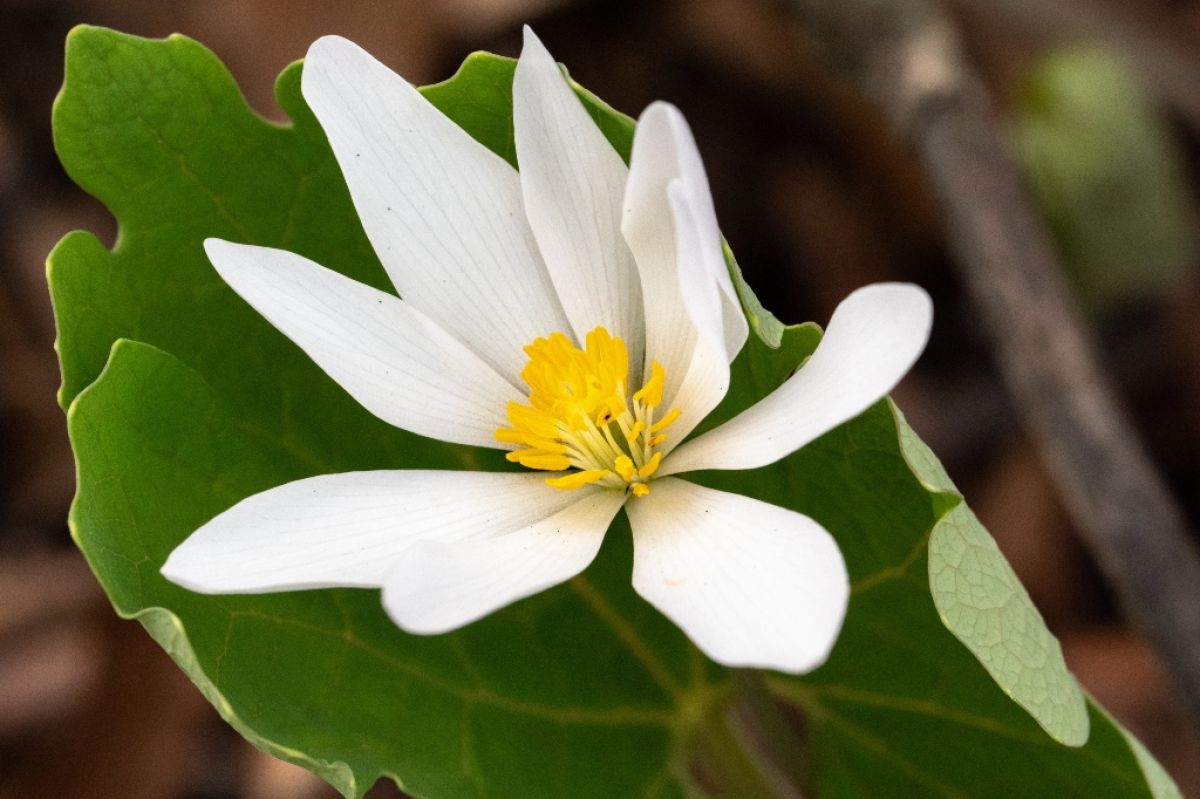From March through May, a sweet white flowering wildflower blooms in our woodlands. The botanical name is Sanguinaria canadensis. Its common name is bloodroot because it exudes red juice. If the stem or root breaks, sanguinaria means bleeding and canadensis means of cannon.
It is 6 to 14 inches high and grows in early spring before the leaves leaf out on the trees to shade the forest floor. A single green leaf emerges from the soil and then the flower, after which the leaf unfurls and is circular in shape with lobes that have margins with teeth. The single flower has about 8 petals and stands above the leaves.
It is a member of the poppy family, and its root is poisonous, so ingesting this plant is dangerous. The Native Americans used it externally to treat ringworm, eczema, fungal infections, and other skin conditions. Native Americans also used the red juice as a dye and for body paint. The addition of oak bark helped make the coloration more permanent.
There is a double-flowered variety, which is sometimes seen in garden. These plants enjoy rich, moist soil that drains well, and if they're happy in their spot, they will form colonies under deciduous trees but will disappear once the trees leaf out.
This is Moya Andrews, and today be focused on Sanguinaria canadensis.










